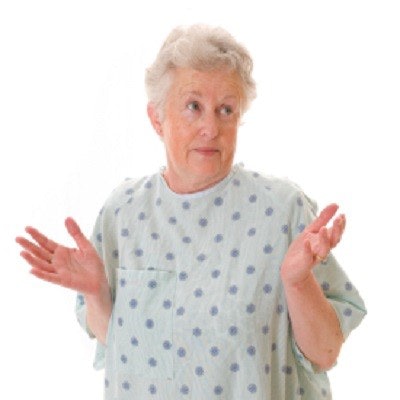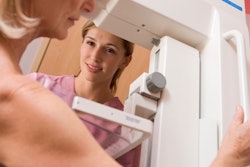
Screening mammography doesn't benefit women 75 and older who have chronic illnesses such as cardiovascular disease or diabetes, according to a new study published September 6 in the Journal of the National Cancer Institute. The finding is sure to generate more debate over whether older women should be screened.
The rate of mortality in sickly older women due to chronic illness exceeds the risk of breast cancer, said senior author Dejana Braithwaite, PhD, of the Georgetown Lombardi Comprehensive Cancer Center in Washington, DC, in a statement released by the university.
"Our findings shed light on what age may be the best stopping point for mammography," she said. "If you have chronic illnesses after age 75, our findings do not support continuing mammograms."
The U.S. is one of the few countries to continue screening women into their 80s and sometimes 90s, according to a team led by Joshua Demb, PhD, of the University of California, San Francisco. In contrast, many breast cancer programs in Europe stop screening women between the ages of 69 and 74, the group noted.
In fact, the U.S. Preventive Services Task Force (USPSTF) has stated there is not enough evidence to recommend for or against screening women age 75 or older. The American Cancer Society (ACS) recommends stopping screening when a woman's life expectancy is less than 10 years.
To assess the benefits of screening mammography in older women with chronic illness, Demb and colleagues used data taken from Medicare claims and the Breast Cancer Surveillance Consortium (BCSC). They tracked breast cancer incidence and death from breast cancer as well as other causes over a period of 10 years among 222,088 women who had one or more mammograms between the ages of 66 and 94.
The researchers marked chronic illnesses among the women by tracking outpatient claims, which they felt would help them understand the comorbidity burden among patients. This was calculated using the Charlson comorbidity index (CCI), a weighted index that predicts risk of death over one year using Medicare and diagnostic claims data.
Each risk factor adds points to the CCI score, and higher scores indicate higher risk of death. For example, a CCI score of 0 indicates that an individual has a 98% chance of survival over the next 10 years, while a score of 4 indicates a 53% chance of survival.
Of the total study cohort, 7,583 women were diagnosed with invasive breast cancer and 1,742 with ductal carcinoma in situ (DCIS). Over the study time frame, 471 women died from breast cancer and 42,229 died from other causes.
The researchers found no relationship between CCI scores and incidence of invasive breast cancer, but higher CCI scores were associated with death from other causes.
What's more, as women aged, the risk of dying from breast cancer stayed steady as the risk of dying from nonbreast-cancer causes increased: from 14.5% among women ages 66 to 74, to 35.7% among women ages 75 to 84, and 65.4% among women 85 to 94.
The 10-year risk of dying from breast cancer was small and did not vary by age, rather staying about the same between the ages of 66 and 94 and accounting for 0.2% to 0.3% of all deaths.
More research is needed to "characterize appropriate stopping ages for screening mammography based on combinations of age and health status," the group wrote.
"In light of these findings, older women with major comorbidity and advanced age may experience diminished benefit from continuing routine screening mammography," the authors concluded.




















